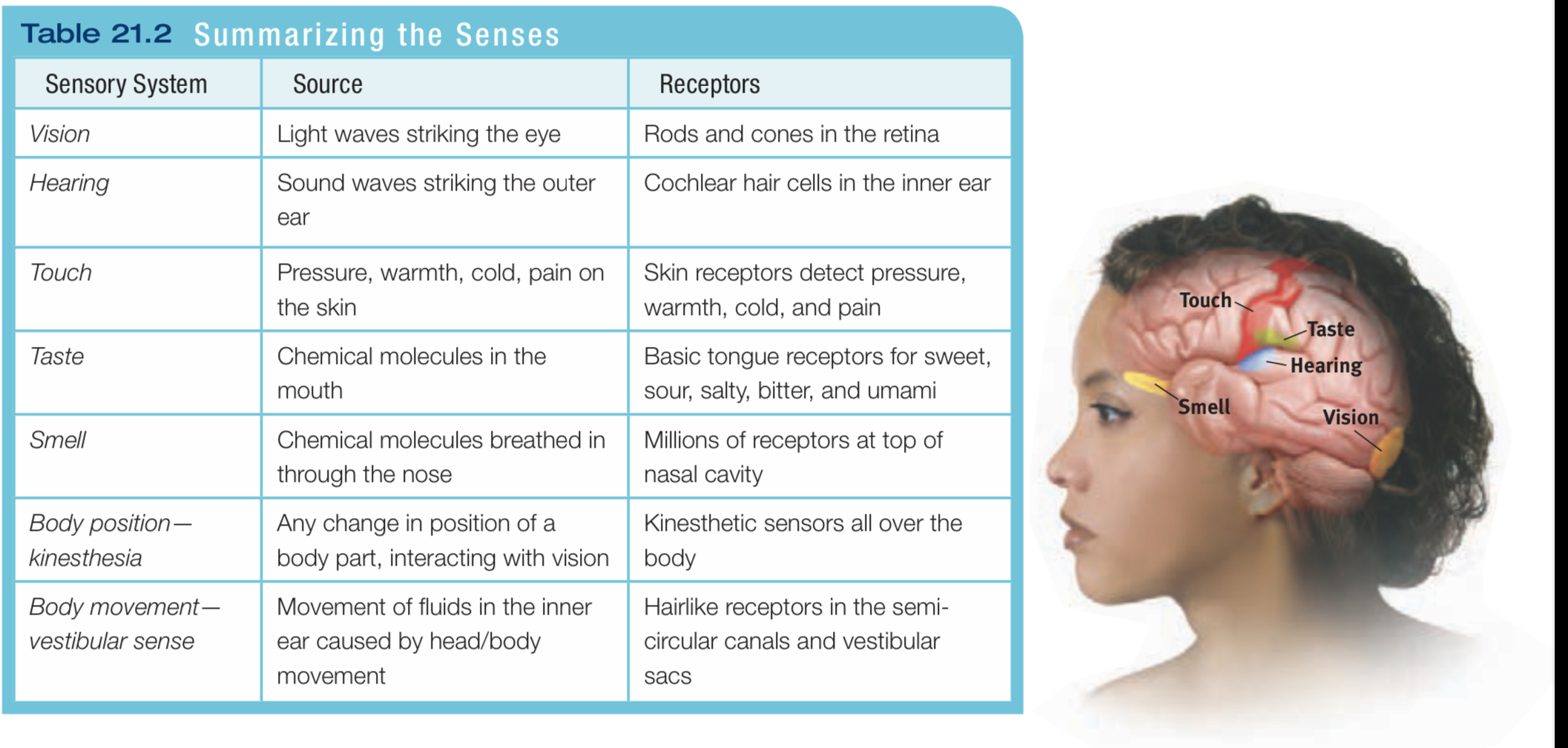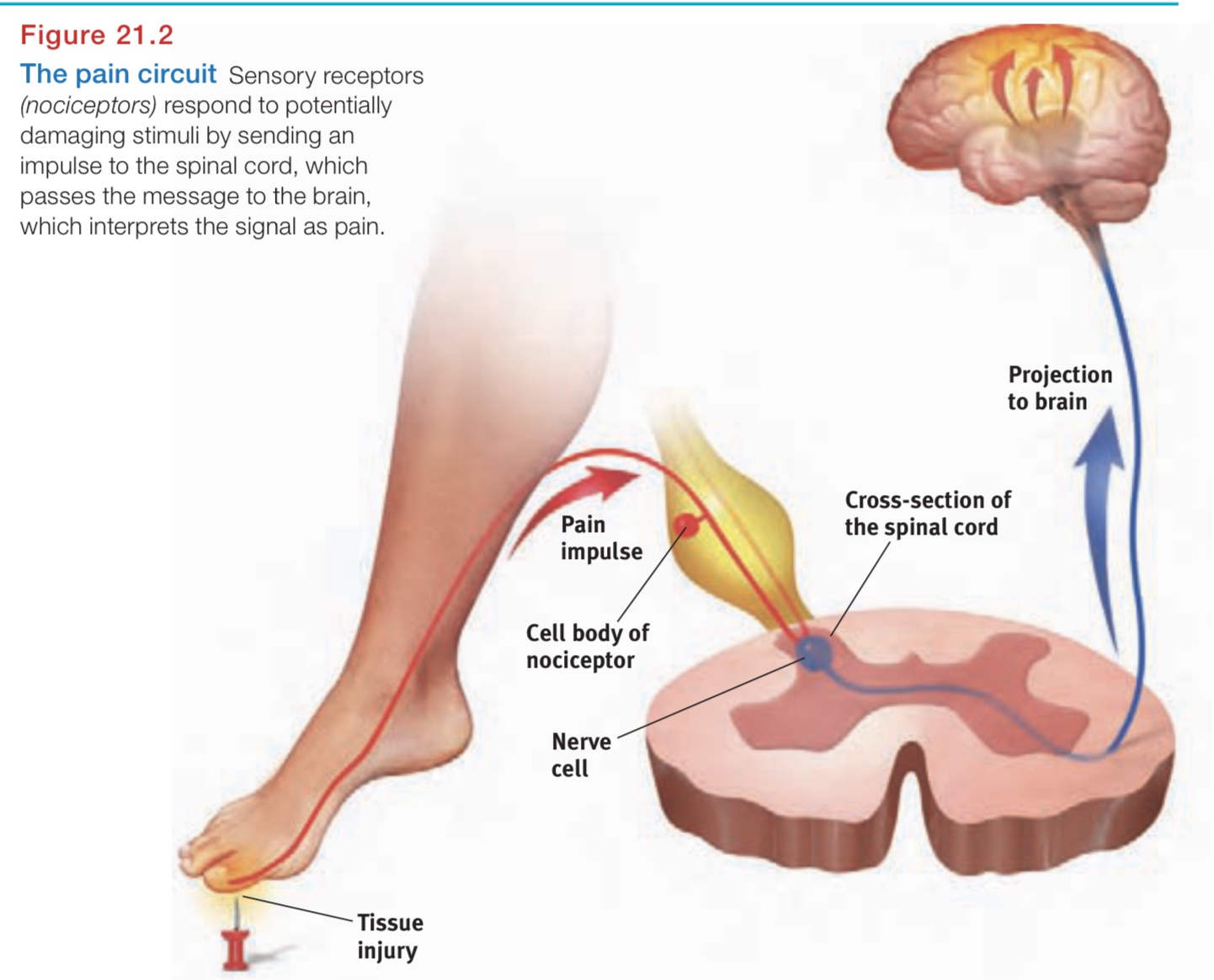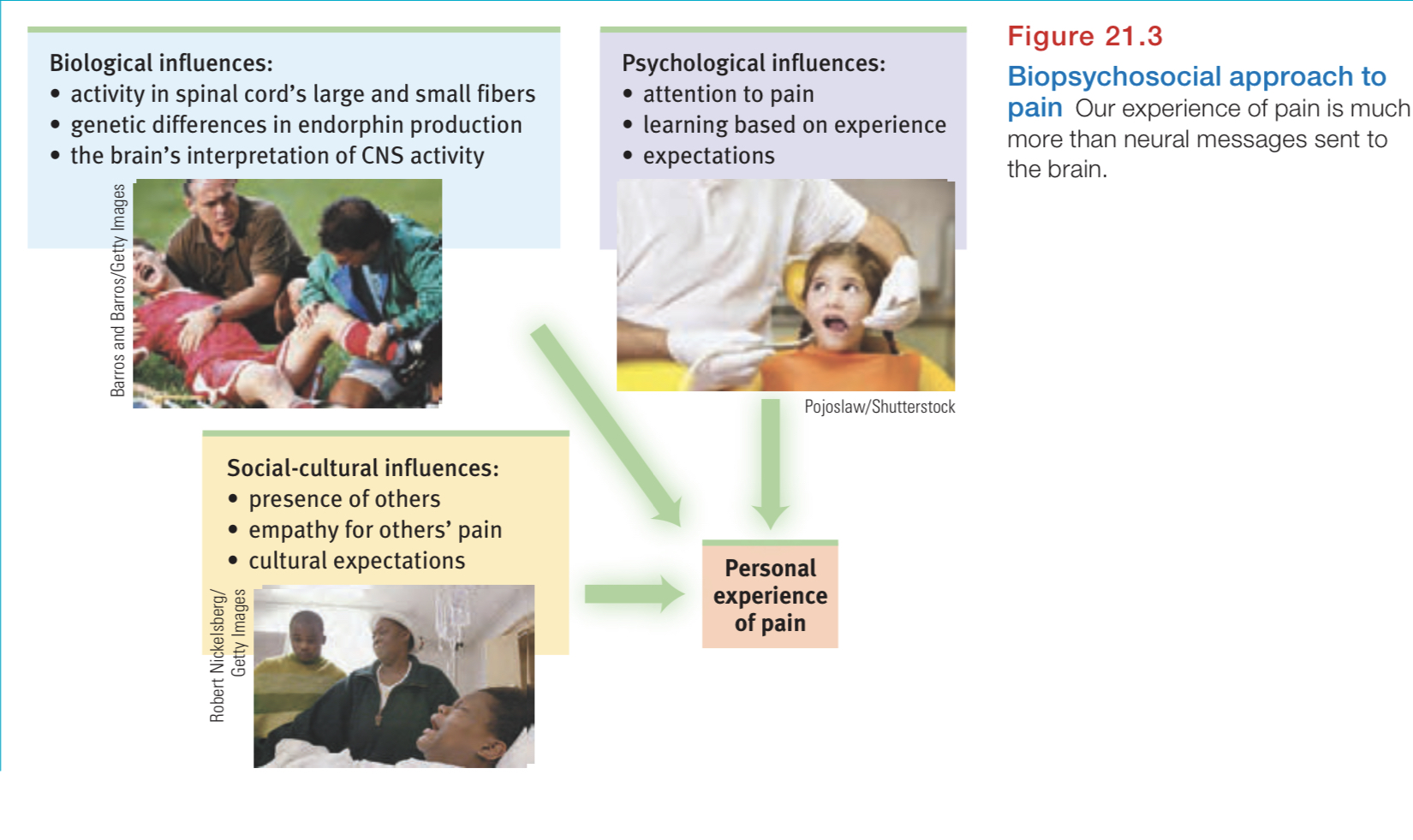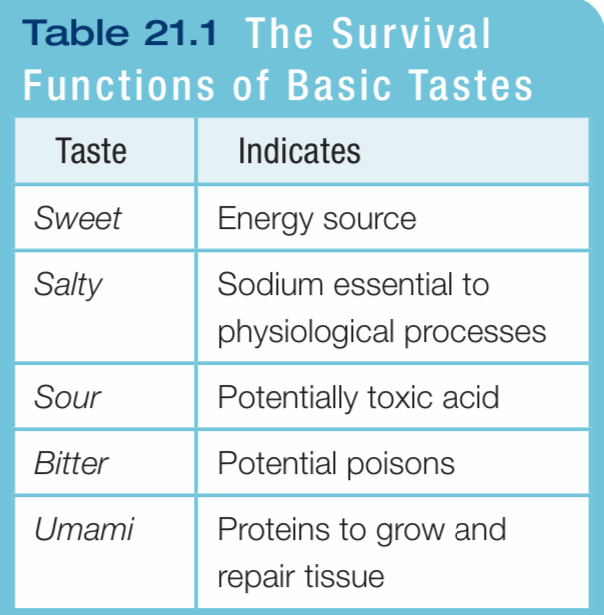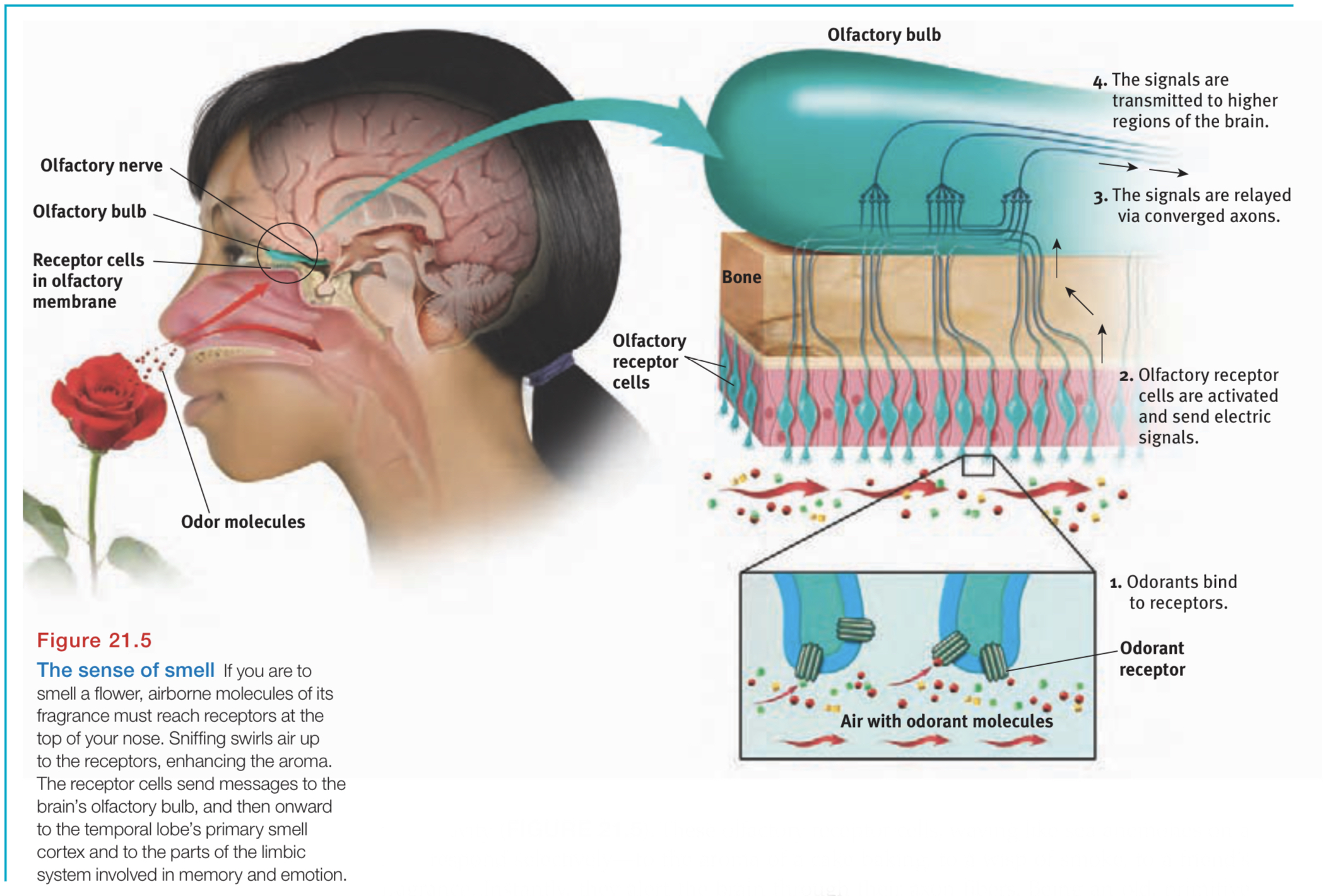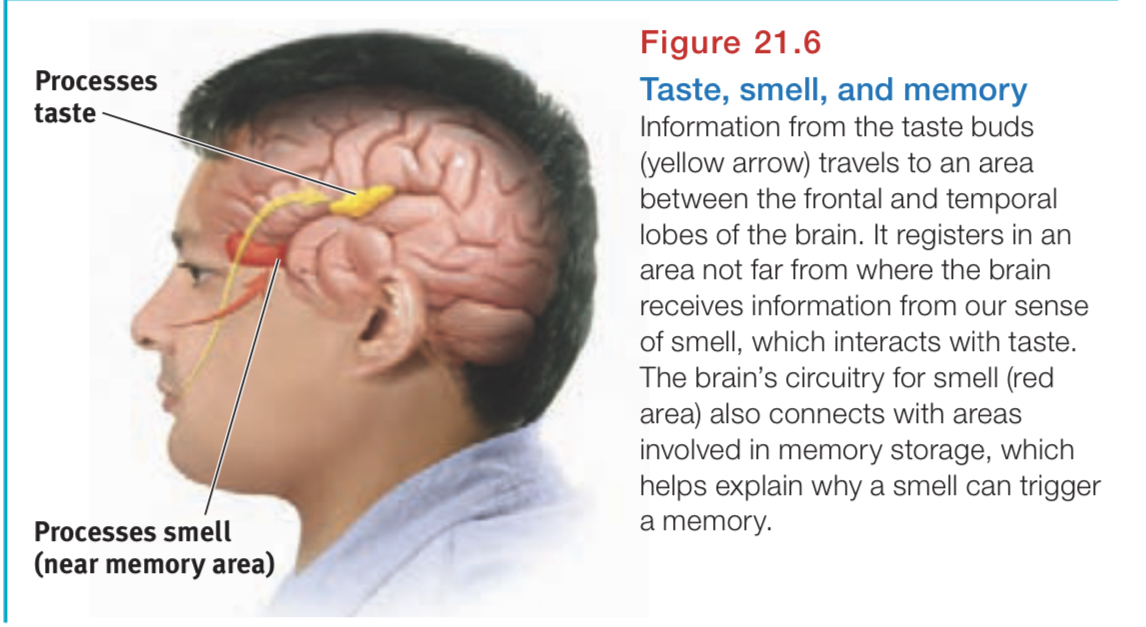Module 21: The Other Senses
Touch ‘
%%21-1: How do we sense touch?%%
- Our sense of touch is actually several senses (pressure, warmth, cold, and pain) that combine to produce other sensations, such as “hot”
- Certain spots on the skin are more sensitive to one sense than the other
- ex: some spots are more sensitive to pressure, others to warmth, others to cold, still others to pain
- Stroking adjacent pressure spots creates a tickle
- Repeated gentle stroking of a pain spot creates an itching sensation
- Touching adjacent cold and pressure spots triggers a sense of wetness, which you can experience by touching dry, cold metal
- Stimulating nearby cold and warm spots produces the sensations of hot \n
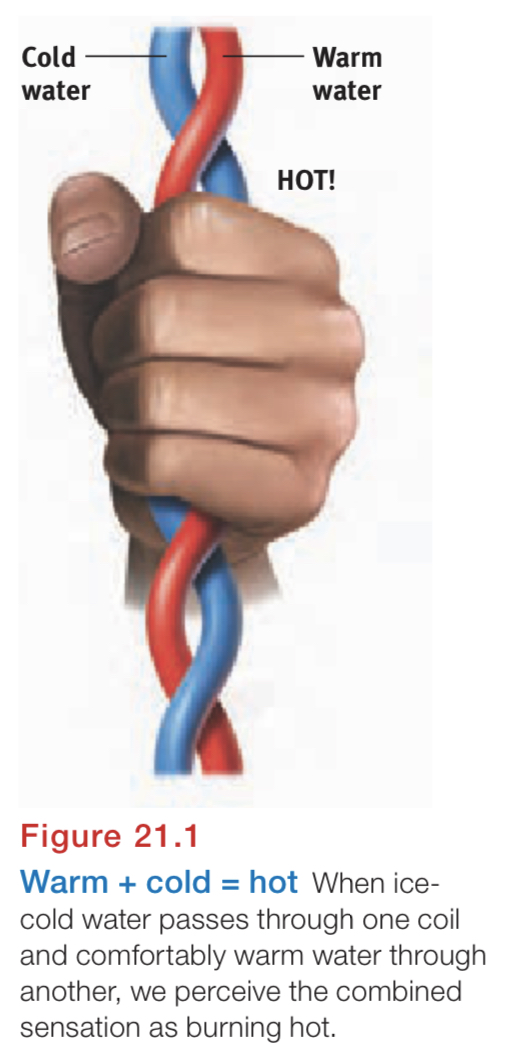
Pain
%%21-2: How can we best understand and control pain?%%
Understanding Pain
- Women are more pain sensitive than men are
- Individual pain sensitivity varies, too, depending on genes, physiology, experience, attention, and surrounding culture
- Pain reflects bottom-up sensations (such as input from nociceptors) and top-down processes (such as experience, attention, and culture)
- There is no one type of stimulus that triggers pain. Instead, there are different nociceptors, sensory receptors that detect hurtful temperature, pressure, or chemicals
- One theory of pain is that a '“gate” in the spinal cord either opens to permit pain signals traveling up small nerve fibers to reach the brain, or closes to prevent their passage.
- ^^gate-control theory:^^ theory that the spinal cord contains a neurological “gate” that blocks pain signals or allows them to pass on to the brain. The “gate” is opened by the activity of pain signals travelling up small nerve fibers and is closed by activity in larger fibers or by information coming from the brain.
- small nerve fibers = conduct most pain signals, larger fibers = conduct most the other sensory signals
- The biopsychosocial perspective views our perception of pain as the sum of biological, psychological, and social-cultural influences.
- Pain treatments often combine physical and psychological elements, including placebos and distractions.
- ex: distracted from pain, natural endorphins
- The brain can stop and create pain
- ex: people who can’t feel pain, phantom limb sensations
Taste
%%21-3: How do we experience taste and smell?%%
- Taste and smell are chemical senses
- Taste is a composite of 5 basic sensations, sweet, sour, salty, bitter, and umami and the aromas that interact with information from the taste receptor cells of the taste buds
- Taste receptors reproduce themselves every week or two, so when you burn your tongue it hardly matters
- When you get older, the number of taste buds decrease, as does taste sensitivity (smoking and alcohol use accelerate these declines)
Smell
- There are no basic sensations for smell. We have some 20 million olfactory receptor cells, with about 350 different receptor proteins
- Odor molecules trigger combinations of receptors, in patterns that the olfactory cortex interprets. The receptor cells send messages to the brains olfactory bulb, then to the temporal lobe, and to parts of the limbic system
- Our brain’s circuitry helps explain an odor’s power to evoke feeling and memories
Body Position and Movement
%%21-4: How do we sense our body’s position and movement?%%
- Important sensors in your joints, tendons, and muscles enable your kinesthesia
- ^^kinesthesia^^: the system for sensing the position and movement of individual body parts
- vision interacts with kinesthesia
- ex: stand with your right heel in front of your left toes. Easy. Now close your eyes and you will probably wobble
- We monitor our body’s position and movement, and maintain our balance with our vestibular sense
- ^^vestibular sense:^^ the sense of body movement and position, including the sense of balance
- The semicircular canals and the vestibular sacs contain fluid that moves when your head rotates or tilts. This movement stimulates hair like receptors, which send messages to the cerebellum, thus enabling you to sense your body position and to maintain your balance.
- If you twirl around and then come to an abrupt halt, neither the fluid in your semicircular canals nor your kinesthetic receptors will immediately return to their neutral state. The dizzy aftereffect fools your brain with the sensation that you’re still spinning. This shows mechanisms that normally give us an accurate experience of the world can, under special conditions, fool us
Sensory Interaction
%%21-5: How do our senses interact?%%
- Our senses can influence one another. This sensory interaction occurs, for example, when the smell of a favorite food amplifies its taste
- ^^sensory interaction:^^ the principle that one sense may influence another
- ex: smell + texture + taste = flavor
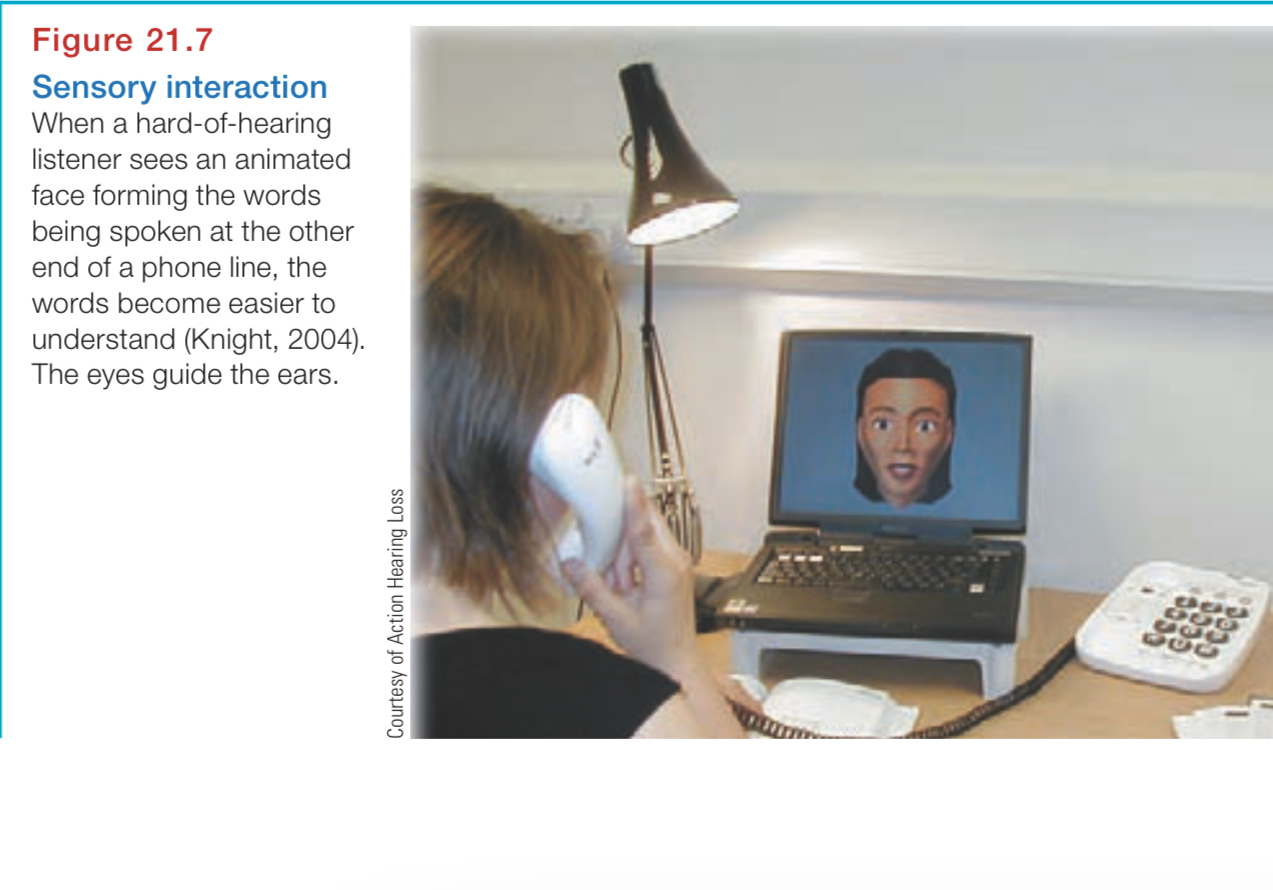
- ^^embodied cognition:^^ in psychological science, the influence of bodily sensations, gestures, and other states on cognitive preferences and judgments
- ex: After holding a warm drink rather than a cold one, people are more likely to rate someone more warmly, feel closer to them, and behave more generously. Physical warmth promotes social warmth
Summarizing the Senses
